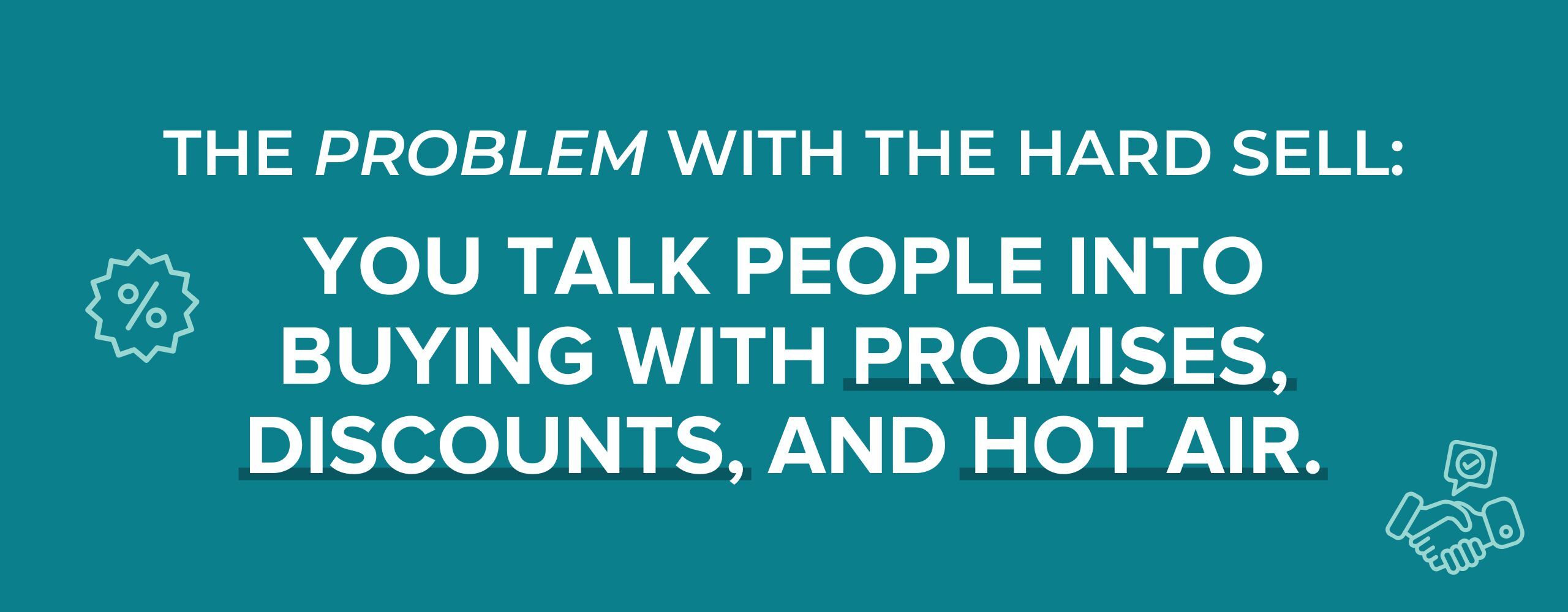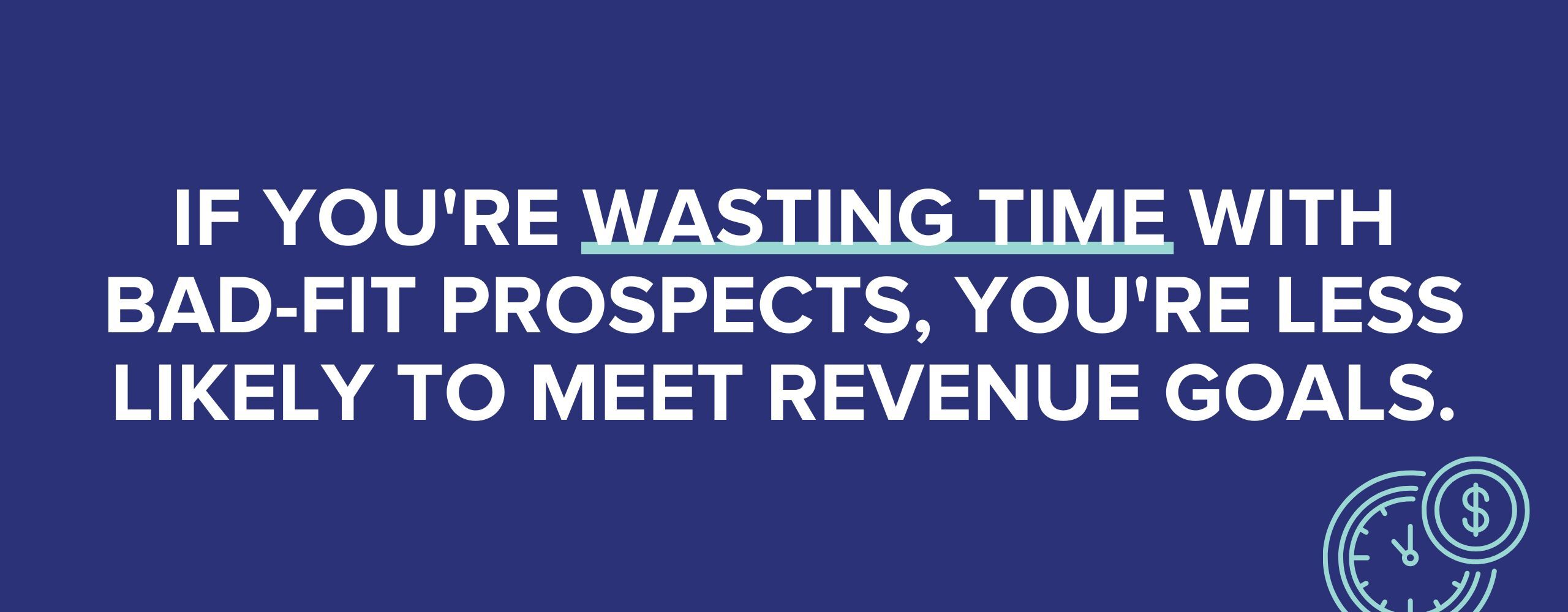Subscribe now and get the latest podcast releases delivered straight to your inbox.
How To Build a Lead Qualification Checklist for B2B Sales (+infographic)
Dec 22, 2022

Everybody says that time is money, but for salespeople, it’s really true. The more time you spend with bad-fit, unqualified prospects, the fewer deals you close, and the smaller your paycheck.
And it's not just your own bottom line that’s hurt. Your business employs a set number of sales reps to bring in a set amount of revenue. If you’re wasting your time with bad-fit prospects, your company is less likely to meet its revenue goals.
The ability to disqualify leads is a key part of a good sales rep’s skillset. Below, I’ll provide a checklist to help you — and especially you newer salespeople — sort through your leads so you can spend your time with those most likely to buy.
I’ll cover:
-
Why disqualification benefits everyone
-
How to disqualify a prospect before a meeting even begins
-
A qualification checklist for your sales process
Disqualification benefits all parties involved
For decades, there was a sell-at-all-costs mentality on sales teams that put an emphasis on a hard sell approach.
The problem with the hard sell is that you talk people into buying with promises, discounts, and hot air. Sure, it helps your bottom line and your commission check, but those buyers are more likely to turn into unhappy customers. They’re the ones who will be needy for your service team. They’re the ones who leave one-star reviews. They’re the ones who disparage your brand to their network because they had a bad experience.

All because a sales rep talked them into a bad-fit purchase.
To combat this, we teach our clients to adopt a new mindset:
- Focus on buyer education, not a sales pitch. Instead of pressuring a sale, build a relationship and help the buyer find the right fit for them — whether it's buying from you or from someone else. You’ll build trust and yield happy customers.
- Disqualify bad-fit prospects. This is what I’ll explain below.
Developing a sales qualification checklist
I divide the qualification process into three buckets. They’re related, but I find it best to keep them separate in your mind.
I never try to tell people they’re not a good fit for what we sell. Instead, I try to present as much information as I can about our offerings and then ask questions to help the prospect self-discover the best outcome.
Before I dive into those questions, it’s worth noting a few things.
- First off, at IMPACT we sell business coaching and training. We’re selling 18-month intensive engagements, so we’re looking for businesses that are ready to commit to an in-depth program.
- Secondly, we follow the They Ask, You Answer framework, which means we’re open and transparent with our customers and site visitors. We openly publish information about our prices, programs, and staff. So, by the time prospects enter the sales process, they should have a lot of answers to their biggest questions. This means we can focus on their needs.
So, what do I ask to help determine if they’re a good-fit prospect? It comes down to three things:
- Are you talking to the right person?
- Are they ready and able to buy?
- Do their company’s needs align with what you’re offering?
To get to the bottom of this, you’ll need to ask questions, which I’ll get into next.
Sales qualification questions
To know if a lead is qualified, I ask these questions.
1. Qualification based on role
- Who’s in charge of making this decision for your company?
- If it’s you, are you able to sign off on this decision?
- If it’s not you alone, what does the approval process look like?
- Which other stakeholders will have a say?
- How can we get them involved in our next conversation?
2. Qualification based on intent to buy
- Tell me about a time in the past when your company tried something new.
- When was it and how did it go?
- What was your budget?
- What’s your budget range for this product/project?
- If there’s no set budget, did you have a ballpark idea of what this would cost?
- What’s your intended timeline?
- When are you hoping to get started?
- When do you need this finished by?
- What happens if you don't meet that deadline?
- What happens if you do?
3. Qualification based on culture
- What are your company’s major goals for the next year?
- What about in the next 3-5 years?
- How do you plan to make up the gap between where you are and where you’re going?
- What happens if you don’t make it?
- What does this purchase mean for you personally?
- How will your day-to-day change if we decide to move ahead?
- Is this purchase intended to solve a current problem or prevent problems in the future?
How to disqualify before a meeting even begins
You should never wait until a sales call to start gathering information to make sure you're talking to the right people. As soon as someone books time with you, the research phase begins. You can use the tools below to help you gather information:
- The company’s webpage: You should always start here. Beyond the information that can help you qualify a lead, a company’s page is a great place to start researching its culture and business model.
- LinkedIn: This one’s a no-brainer if you’re in B2B sales. Check out the company’s page, its people, its job openings, its activity, and any other information you can find. See who you’re talking to and glean what you can about the company.
- Paid tools: This is a rabbit hole, I’ll admit, but tools from ZoomInfo, Dun & Bradstreet, PrivCo, and others can offer market intelligence and financial information about private companies. They can be costly, though.
- Your CRM: How serious is the prospect about doing business with you? Check your CRM to see their activity on your site. If they’ve read a bunch of pages, signed up for your newsletter, and followed you on social media, then they’re fully engaged with your brand. If they’ve only viewed your “talk to the sales team” page, not so much.
All this said, you don’t want to assume you’re getting the whole story from your research. That company that seems like a start-up too small to afford you? Maybe they just secured $45M in venture funding. That point of contact listed as a middle manager? She might be moving into a VP role in the next few weeks and is looking to shake things up.
Bottom line: Do your research, but keep an open mind.
Lead qualification is a critical sales skill
To sell more, you need to sell to the right people. Make sure you’re doing work ahead of any sales meeting to learn what you can about who you’ll be speaking to. Then, in the meeting itself, ask the right questions to get the information you require.

If you end up having to cancel a meeting because the lead is not qualified, consider that to be a win. You’ve got time back in your calendar and you’re not going to spend time on someone who isn’t going to buy from you anyway.
And remember, the more you (and your company) can focus on buyer education, the more your leads will know before they enter the sales cycle. If you’re upfront and transparent about what you’re selling, bad-fit customers will disqualify themselves.
Not sure how to get started? At IMPACT, we help businesses like yours thrive by embracing a customer-first approach to sales and marketing. Talk to one of our advisors to learn more.
Here's the full infographic summing everything up:



Order Your Copy of Marcus Sheridan's New Book — Endless Customers!